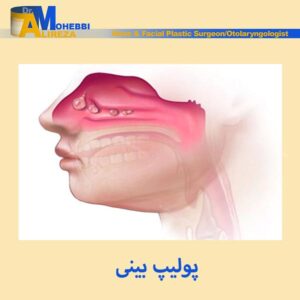Ali Reza Mohebbi, MD, Ahmad Daneshi, MD, and Ali Reza Emami, MD. Ear Nose Throat J. 2008 December;87(12):E14
Abstract
Neuroendocrine carcinoma is a type of neuroendocrine system neoplasm that occurs in organisms in which amine precursor uptake and decarboxylation (APUD) cells are uncommon. In the human body, the most common sites of neuroendocrine carcinoma are the gastrointestinal tract and the lungs. From a histologic standpoint, these tumors are identified by their positive reaction to silver stains and specific markers for neuroendocrine tissues, such as chromogranin A, synaptophysin, and neuron-specific enolase. In addition to local symptoms, these tumors may cause flushing, wheezing, and episodic diarrhea secondary to the release of vasoactive substances. Our medline search encompassing the 20-year period prior to 2003 found few cases of this type of tumor in the paranasal sinuses and nasal cavities and only 1 case of an isolated neuroendocrine carcinoma in the nasopharynx. We describe another case of an isolated nasopharyngeal neuroendocrine carcinoma, which we observed in a 74-year-old woman. We review the clinical presentation and the surgical and systemic treatment.
Introduction
Neuroendocrine carcinoma is a neuroendocrine system neoplasm that occurs in organs wherein amine precursor uptake and decarboxylation (APUD) cells are uncommon.1 In animals, this carcinoid has been reported in the intestines, liver, bile ducts, lungs, gall bladder, esophagus, nasal cavity, and skin.2-9 It is one of the most malignant tumors.2,4,5,8
In the human body, the most common sites of neuroendocrine carcinoma are the gastrointestinal tract and the lungs.1,10 Our search of the medline database for the 20-year period prior to 2003 found very few case reports of this kind of tumor occurring in the paranasal sinuses or nasal cavities. In addition, we found only 1 report of an isolated case in the nasopharynx.11 In this article, we describe another case of an isolated nasopharyngeal neuroendocrine carcinoma.
Case report
A 74-year-old woman requested to be examined because she had been experiencing symptoms of nasal obstruction for the previous 6 months. Initially, the obstruction had been partial, but within a few weeks it had become complete and permanent. As the obstruction progressed, the patient developed mouth breathing and night snoring. She also began to experience bilateral hearing loss, tinnitus, and ear clogging, which were worse on the left, as well as bilateral epistaxis and anosmia. During this period, the patient had undergone several rounds of treatment, including classic sinusitis treatments, at another medical center, but they were not effective.
During evaluation at our clinic, the patient reported no otalgia or otorrhea. Examination of her mouth and throat detected no obvious abnormality. Nasal examination revealed that the mucosa was slightly inflamed and pale. Examination of the ears detected normal external canals on both sides and retracted tympanic membranes. Her cranial nerve func





